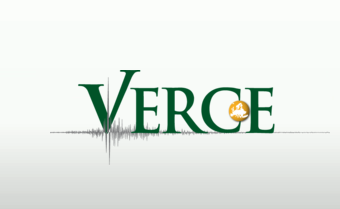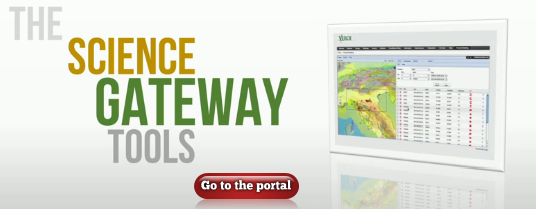Training: Knowledge Base
Information Technology
- VO, Grid Certificate and CA
- VO: Virtual Organisations (VOs) are groups of researchers with similar scientific interests and requirements, who are able to work collaboratively with other members and/or share resources (e.g. data, software, expertise, CPU, storage space), regardless of geographical location. (from http://www.egi.eu/community/vos)
- Grid Certificate: A Grid Certificate is a X.509 Certificate used to identify Grid users and Grid resources.
- CA: A Certificate Authority (CA) is an entity that issues Grid Certificate.
- Here is the CA list that relates with VERCE partners:
- France: https://igc.services.cnrs.fr/GRID2-FR
- Germany: http://www.gridka.de/cgi-bin/frame.pl?seite=/ca/d_inhalt-en.html, https://pki.pca.dfn.de/grid-root-ca/cgi-bin/pub/pki?RA_ID=101 or http://www.grid.lrz-muenchen.de/en/gacc/certreq.html
- Italy: http://security.fi.infn.it/CA
- Netherlands: http://ca.dutchgrid.nl
- UK: http://ngs.ac.uk/ukca/certificates
- Portal framework
- A portal is a Web-based application that acts as a gateway between users and a range of such Web services. Portal technology is adopted by VERCE to provide a unique interface for users to access distributed seismic data. Portal development is normally based on a portal framework. The followings are recommended open-source portal frameworks:
- eXo: http://exo.sourceforge.net
- Liferay: http://www.liferay.com
- Jetspeed: http://portals.apache.org/jetspeed-2
- Portlet specification
- A portlet is pluggable user interface software component that is managed and displayed in a web portal. The followings are portlet standards:
- OGSA-DAI
- OGSA-DAI is a solution for distributed data access and management. It has been under development since 2002 and is now an established open source product currently managed by EPCC, The University of Edinburgh. VERCE is adopting OGSA-DAI to deploy a range of web services that present distributed seismic data.
- Software and manual download: http://www.ogsadai.org.uk/download.php
- User documentation: http://sourceforge.net/apps/trac/ogsa-dai/wiki/UserDocumentation
- VERCE Gateway and Dispel
- The Gateway is the hub of the VERCE platform and is based on technology developed by the ADMIRE project(http://www.admire-project.eu/). The Gateway delegates the enactment of user workflows to available distributed resources. Currently only workflows written in the Dispel workflow language are accepted for development and execution on OGSA-DAI services. Dispel is currently chosed for the following reasons: (i) it is dataflow based for multi-site enactment, (ii) it has functions to describe work patterns, and (iii) it is designed for human communication and to avoid detail that inhibits automated mapping and optimisation. The above section contains links to OGSA-DAI resources, while the links below are to ADMIRE and Dispel resources.
- ADMIRE software platform: http://www.admire-project.eu/admire-software/index.html
- ADMIRE gateway installation: http://sourceforge.net/apps/trac/admire/wiki/GatewayInstallation
- Introductory Dispel tutorial -- html: http://homepages.inf.ed.ac.uk/pmartin/tutorial/index.html
- Introductory Dispel tutorial -- pdf: http://homepages.inf.ed.ac.uk/pmartin/DispelTutorial.pdf
- GridFTP
- GridFTP is a high-performance, secure, reliable data transfer protocol optimized for high-bandwidth wide-area networks. GridFTP is useful for a number of reasons - including faster transfer and in-built security. It achieves this through the following alterations: security with GSI, third party transfers, parallel and striped transfer, partial file transfer, fault tolerance and restart, and automatic TCP optimisation. Click here to find out full information of GridFTP.
- iRODS
- iRODS (the integrated Rule-Oriented Data-managemenmt System) is a community-driven, open source, data Grid software solution. iRODS helps to manage (organize, share, protect, and preserve) large sets of computer files. Collections can range in size from moderate to a hundred million files or more totaling petabytes of data. Beyond these generic capabilities, iRODS is also highly configurable and easily extensible for a very wide range of use cases through user-defined Micro-services, without having to modify core code. Click here to find out full information of iRODS.
- UNICORE
- UNICORE (UNiform Interface to COmputing REsources) offers a ready-to-run Grid system including client and server software. UNICORE makes distributed computing and data resources available in a seamless and secure way in intranets and the internet. Click here to find out full information of UNICORE.
- Dispel4Py
Dispel4Py is a Python library for describing abstract workflows for distributed data-intensive applications.
Seismology Information
- Data format
- SAC:
http://www.iris.edu/software/sac/manual.html - SEED and Mini-SEED: http://www.fdsn.org/seed_manual/SEEDManual_V2.4.pdf
- QuakeML --- XML schema for seismology: https://quake.ethz.ch/quakeml/
- SAC:
- Application Tools
- SeisSol
- Whisper: This project focuses on the use of the seismic ambient noise to monitor slight changes of properties in the solid Earth. Codes developed provide tools for processing a large set of seismograms (traces), for computing correlations and analyse it. They use the standard python scientific libraries numpy and scipy and the very good useful work made by the obspy library.
- ObsPy: Python Toolbox for seismology/seismological observatories.

